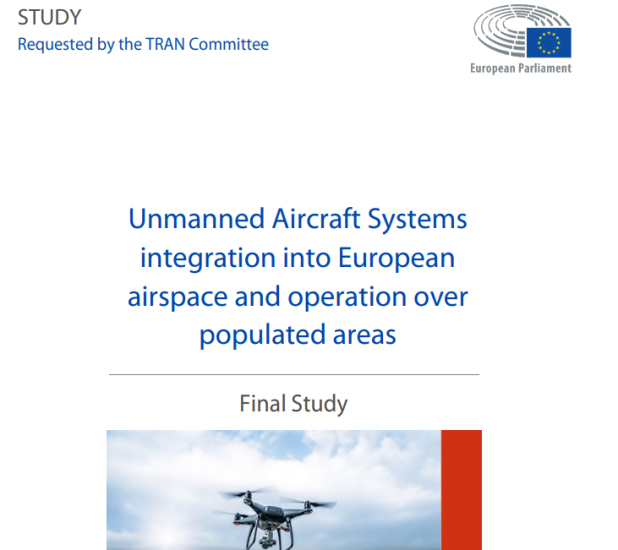A study published in May following a request by the European Parliament TRAN committee is informing an assessment of the Drone Strategy 2.0 and offers a set a proposed policy recommendations.
The study, ‘Unmanned Aircraft Systems (UAS) integration into European airspace and operation over people’, provides an overview of good practices and military and civil UAS integration. The seven key findings are as follows:
- The integration of Unmanned Aircraft Systems (UAS) within airspace will happen in stages. Current operations are in segregated airspace away from manned aircraft. Integration with manned aircraft will require improved technical and operational procedures. These are currently being looked at as part of Research & Innovation (R&I) programmes.
- UAS have similarities and differences with manned aircraft in terms of how they operate. The focus should be on areas in which they differ, such as manoeuvrability, communications, performance and the diversity of their operating environments.
- Operations over populated areas require a specific focus on ground risk. Integration into airspace over these areas needs to account for dynamic changes in population densities as well as safety, privacy, security, noise and social acceptance concerns.
- Good practices have been identified across the areas of user-friendly platforms and information sharing, step-by-step approaches to use cases, engagement with industry and city stakeholders and military and civil synergies.
- There are a number of lessons that can be learned from Military and Civil cooperation on systems, technologies and processes. However, procurement barriers could be eased to support the adoption of civil technologies beyond R&I.
- Incentives for industry are an area in which the EU is arguably slightly lagging behind the US and China, where government programmes are seeking to reduce cost and risk for private sector development in the UAS and electric vertical take off and landing aircraft (eVTOL) markets.
- Drone Strategy 2.0 provides good coverage of the issues currently facing the UAS industry. However, it may underplay some of the difficulty in achieving full integration, which requires further coordination and prioritisation to keep the EU on track to achieve a largescale drone market in the EU by 2030.
The study says: “Drones have the potential to become an increasingly important part of mobility strategies. The European Drone Strategy 2.0, which was published in November 2022 by the European Commission, provides political direction on the next steps of Unmanned Aircraft Systems (UAS) development within the European market. However, there remain key technical, procedural, social and regulatory requirements that need to be addressed if UAS are to be safely and commercially integrated within European airspace and wider society. Accordingly, the objective of this study was to assess the challenges and possible solutions of integrating UAS within European airspace and, in particular, over populated areas, to consider military and civil integration, to identify and analyse good practices and to undertake an assessment of the Drone Strategy 2.0.”
For more information visit:




